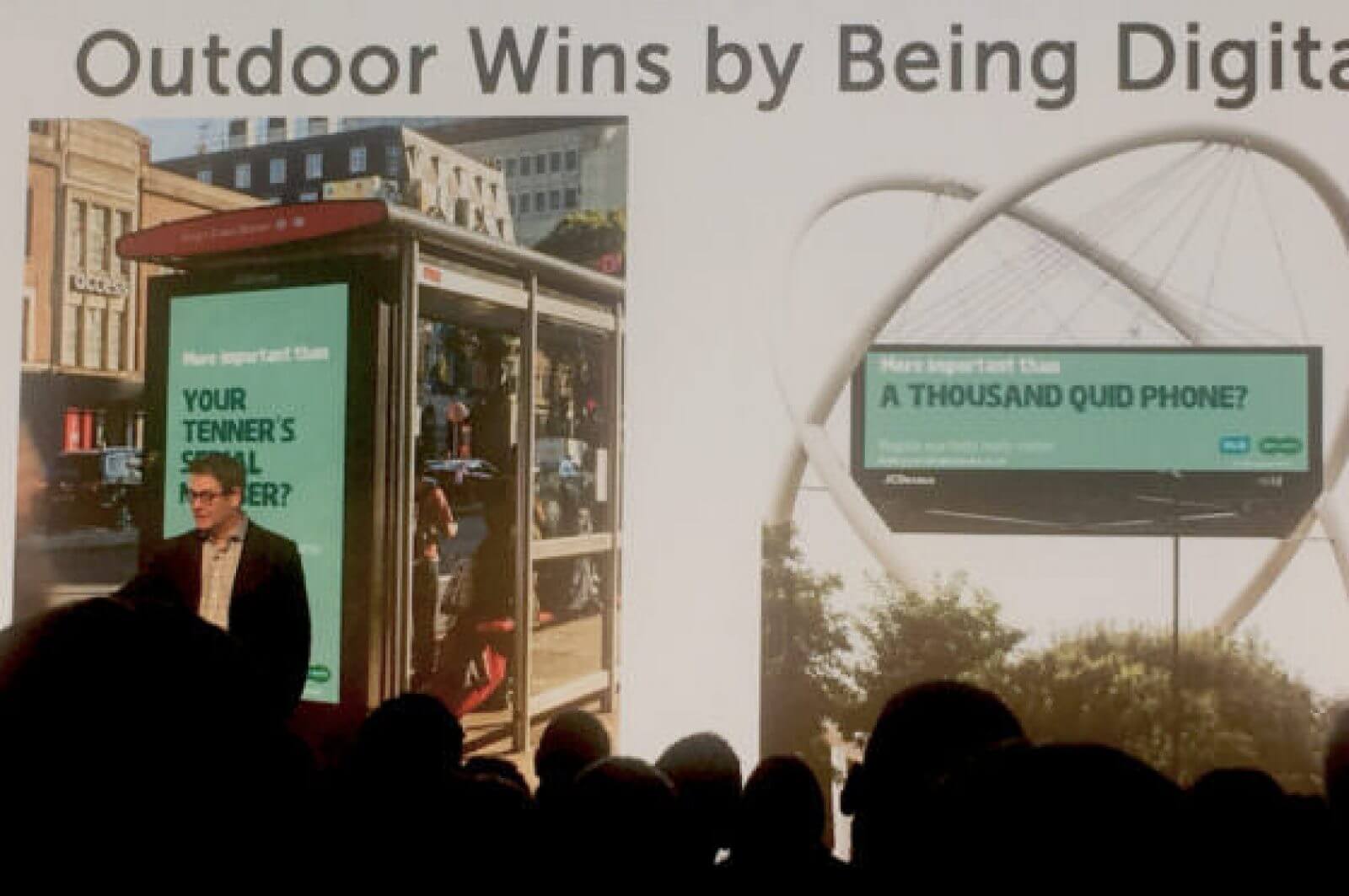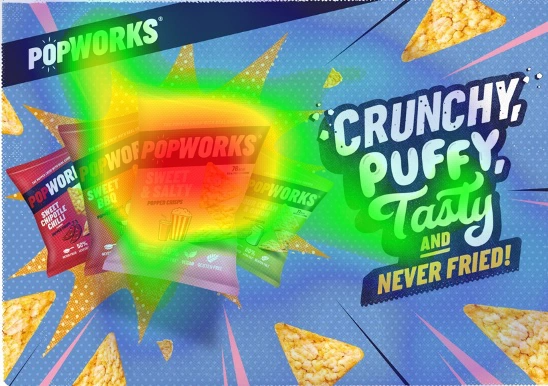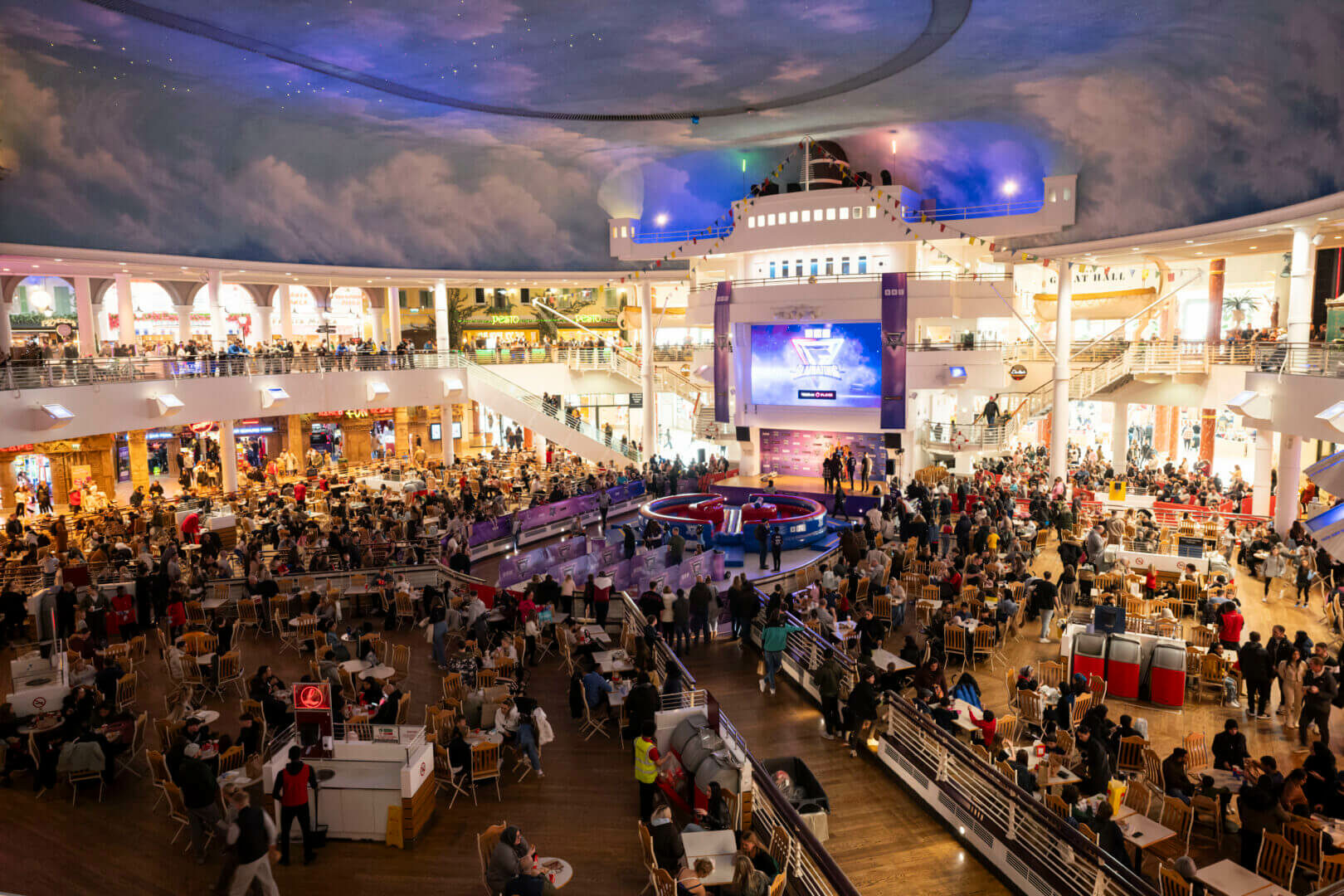Upfront and Personal – Digital Equips OOH for 2018
Out of Home changes have perhaps failed to register on the scale of the decline of print media and the rise of digital over the past ten years, but the industry’s notable presence at the IAB upfronts is starting to change that. JCDecaux’s impressive event this week hosted some unwavering opinion around the positioning of Out of Home in the wider digital media context, heralding a bright present and future and certainly a digital one.
Central to the proposition of OOH is the next wave of brand building which defines the role of digital in what was described by JCDecaux’s Ben Maher as “mass one-to-one marketing”. JCDecaux also launched a charter commitment to delivering in the digital media space which reflects the advances in technology that is happening across the buy and sell sides of OOH.
The IAB event proved essential viewing and a reality check for clients and agencies working in the digital media environment.
Guest speaker Mark Ritson (professor) emphatically reinforced some media planning fundamentals where digital media has seriously lost its way. “Digital OOH” he suggested “offers the best of both worlds”, referencing social media engagement metrics that lack any kind of apples for apples comparison with traditional media.
Listing eight digital challenges where the digital industry is not measuring up – including transparency, branding, metrics and trust – Ritson ridiculed social and digital media attempts to deliver contextually relevant and honest advertising. He articulated programmatic as a box of turds, equally disappointing on efficiency, transparency, publisher revenues and contextual relevance. And he cited real examples where $100 million had been removed from digital budgets to little or no effect on activation metrics.
Meanwhile, the digital boom (in media revenues) coincides with a serious disregard of branding as a core communication commodity “at the bottom of the funnel”. In 2018 we are already facing economic and political challenges, but branding remains fundamental in today’s digital climate, a recurring theme throughout and also something actively concerning many clients already.
Digital OOH offers an interesting “hybrid solution” in a fragmenting digital world. Specsavers’ current digital campaign was used as an example of combining creativity, context and topicality to reach a mass audience, fully integrating and complimenting a digital media strategy. An example of the best work that’s out there this week.
If Ritson put digital OOH’s rise in a strong place as a trusted and transparent partner to digital media, Adam and Eve DDB’s Les Binet went on to reiterate that the return to branding should not be overlooked and to satisfy what clients really want could be the cornerstone of today’s media planning.
Updating the celebrated IPA effectiveness analysis, Binet emphasised that “broad reach still trumps tight targeting” and illustrated that OOH and TV remain the best ways to drive broad, profitable communication to audiences.
Observations on OOH Effectiveness and Digital OOH’s Contribution
Based on extensive case studies, the research made some crucial observations on how OOH can be used in media planning to achieve clear client effectiveness goals, many simply reinforcing well-versed advertising principles. For example…
“90% of effectiveness is driven by the reach of the medium.”
“Emotion and Fame based communication is the most effective; OOH doubles the chance of driving brand fame and animated content and video is the most emotive format.”
“Adding OOH to the media mix increases the effectiveness of campaigns by 20%.”
The real news came in the analysis of digital OOH’s contribution in the last few years, reaching critical mass and contributing across formats as a truly national medium. “Digital OOH makes OOH more effective than before, the effect doubling” and currently (at +37%) “getting stronger” as more panels emerge in high value and high footfall locations.
This reflects brands’ smarter communication using digital OOH of late and rewards high levels of media owner investment (as we know, the majority in new locations).
These insights provide a compelling and complementary view as we embrace a challenging 2018.
Digital OOH can enhance cross-channel communication, add an important dimension to digital media and OOH, whilst delivering transparently on accountability, effectiveness and brand security factors that become more important to convey.
As our industry embraces the IAB community, we are showing our own upfront commitment to digital media, ready to deliver dynamic content to relevant audiences. By committing to automation, accountability and data-led planning, OOH is well placed for “unprecedented growth” (Ritson), delivering on core planning principles that serve brands well.
Bring on 2018, a year for brands to reclaim their meaning in advertising, and for OOH to embrace an invigorating digital media landscape that can bring mass personalisation to real people on the move and in the right context.




